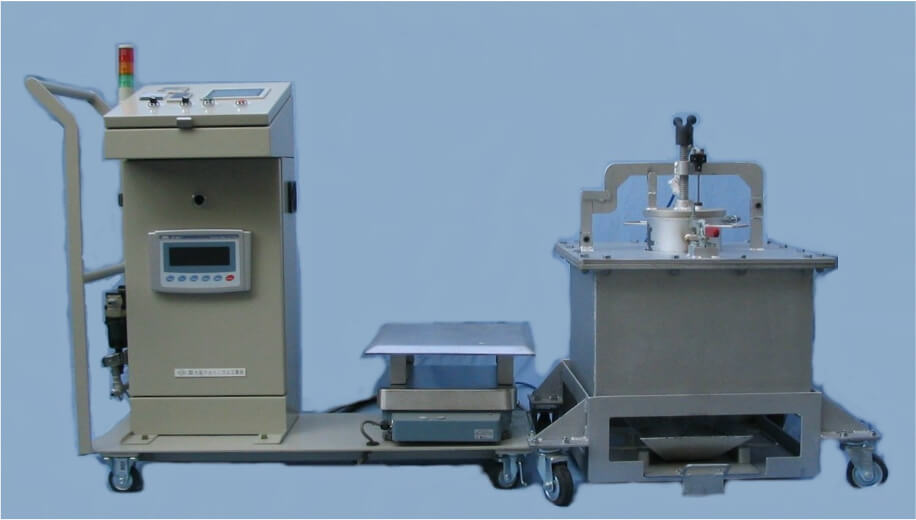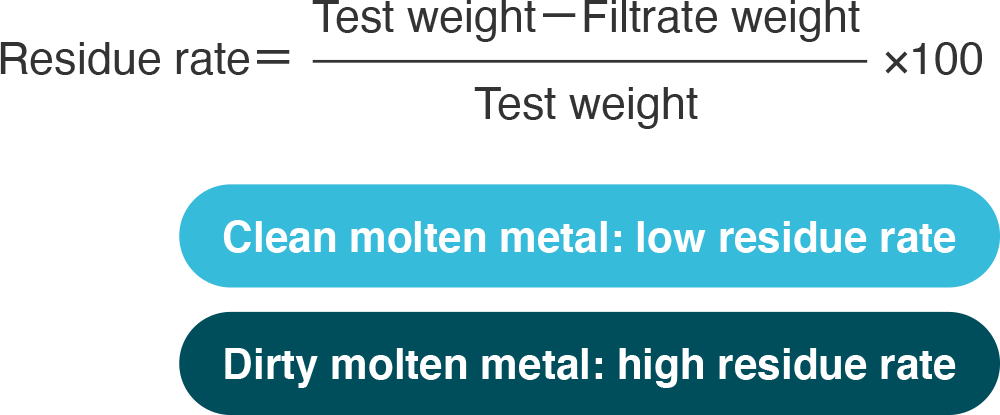Technical support
DIK molten aluminium alloy cleanliness evaluation apparatus
This system measures the cleanliness of molten aluminium (fewer inclusions is better).

Features
1
When the test samples are homogeneous, reproducibility is high, and variations are small.
(For low-cleanliness molten aluminium, samples are less likely to be homogeneous, and there may be some variation.)
Table. AD12.1 in DIK Shirakawa Plant
| Sample | Residue rate (%) |
|---|---|
| 1 | 0.85 |
| 2 | 0.79 |
| 3 | 0.81 |
| 4 | 0.90 |
| 5 | 0.93 |
| Average | 0.86 |
| Standard deviation | 0.056 |
2
High correlation

3
Testing is easy.
(Measurement of the number of inclusions, etc., in the microstructure is not necessary.)
4
Data do not depend on the measurer.
Measurement principles
The sample and filtrate weights are measured to calculate the residue rate with the formula below.

Test weight: weight of the test ingot
Filtrate weight: weight of the filtered molten metal


